Review: BlackBerry PlayBook 4G-LTE (2012)
 Friday, August 10, 2012 at 11:46AM
Friday, August 10, 2012 at 11:46AM 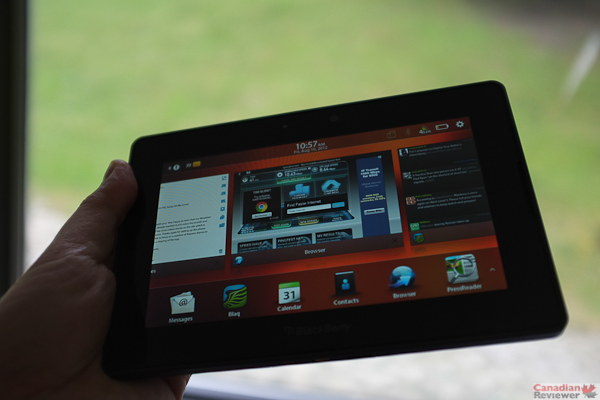 Text and photos by Gadjo Cardenas Sevilla
Text and photos by Gadjo Cardenas Sevilla
Will the new and improved 32GB BlackBerry PlayBook 4G-LTE keep the fires burning for RIM or is it too little too late for the QNX and future BlackBerry 10 tablet? We get a hands on at the newer, faster and 4G-er PlayBook.
Unboxing the long awaited 4G-LTE PlayBook is a lot like seeing an old friend after a year and realizing that, while a lot has remained the same, your friend has picked up some new skills and traits. In the case of the 4G-LTE PlayBook it looks and feels very similar to to last year's model.
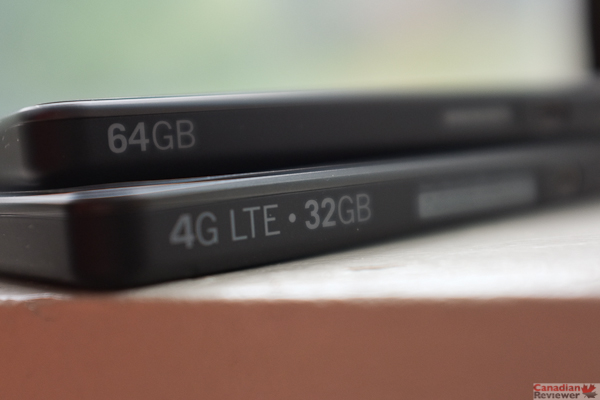
It is identical to the older PlayBooks except for a small slot where the microSIM card is placed and some branding that reflects that this tablet is indeed compatible with 4G-LTE (Long Term Evolution) high speed data networks. The look and feel is consistent with the tough and businesslike design of the original PlayBook and it will most definitely fit in all the cases and accessories made for its predecessor.
What has changed in one year is the inclusion of the data radio which now makes the PlayBook a real mobile device that doesn't need to depend on WiFi alone or to piggyback onto a smartphone's data plan. RIM has also used a newer, faster 1.5GHz dual core processor which will no doubt come in handy once the transition to BlackBerry 10 happens in 2013. RIM has also managed to squeeze in the 4G-LTE radios without adding any bulk to the device which is an engineering feat.
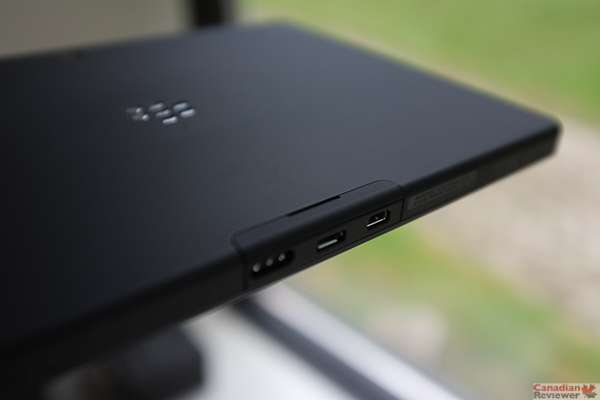
To test the PlayBook, I transferred all the files and apps from my personal 64GB BlackBerry PlayBook, which I bought last year when prices dropped. That older PlayBook has served me well as a media playback device while traveling and I do get a lot of use from it as a mail client and for Twitter using the awesome Blaq app, my favourite Twitter app on any platform.
Data transfers needs to be done on a Mac or a PC with the BlackBerry software and it takes around 30 minutes to move all the files.
Aside from the browser and mail appliaction, some of my go to apps on the PlayBook are the Kobo eReader for books, PressReader for newspapers, Adobe Connect for video conferencing, Word to go for writing and various RSS readers and a handful of games.
My initial observation is that the 4G PlayBook is perceptively faster all around. Launching apps, real-time multitasking and even playing games all seem zippier overall. Prolonged use revealed that it also gets a warmer to the touch specially in the rear centre area right where the BlackBerry logo is. This is something I never experienced with the older model.
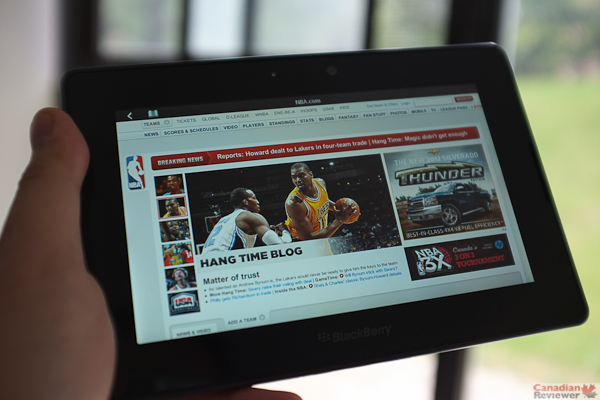
Surfing the web, which is a task that the PlayBook has always excelled in. The PlayBook is also the least fidgety tablet I've used when it comes to rendering Adobe Flash, something that other tablets seem to struggle with constantly.
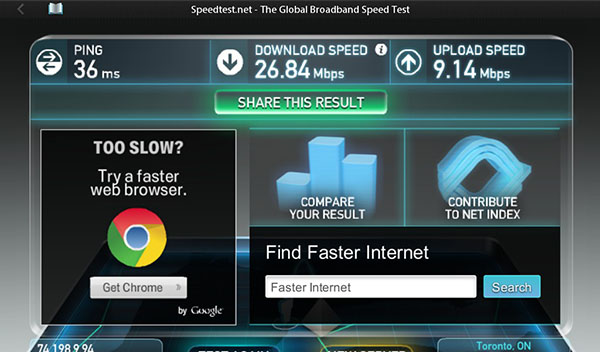 The 4G-LTE PlayBook delivers consistent speeds on Rogers's LTE network.
The 4G-LTE PlayBook delivers consistent speeds on Rogers's LTE network.
The best thing about having 4G-LTE out of the box is that users now have a portable option that's geared to offer access speeds that are equal to or even faster than WiFi. This gives users some flexibility on how they consume their mobile data. This means users can have a feature phone without a data plan for calls and text messaging and use the 4G-LTE PlayBook as their Internet, email and social media conduit. This solution may not appeal to everyone but it does make sense.
The 4G-LTE PlayBook also seems like an ideal device for enterprise users, it has BlackBerry's security built-in and it can run various enterprise-specific apps anywhere it can find a data connection. I hear law enforcement has some plans for it. I can also see this as a popular option for students although pricing will likely be an issue.
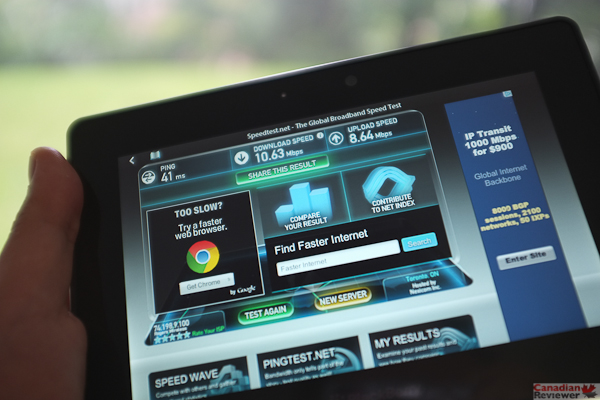
In terms of LTE connectivity, the PlayBook delivered consistently, at times scaling back to HSPA+ when 4G was spotty.
I was satisfied by this performance while testing the PlayBook briefly around Toronto. I need to spend more time with the device to determine how long the battery lasts with the LTE function on.
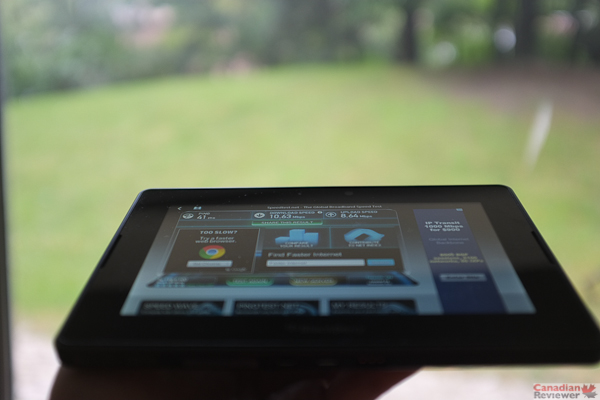
I was a bit disappointed to realize that aside from the 4G-LTE capability and the processor upgrade, there haven't been any drastic changes to the PlayBook in terms of functionality. There's no mention of NFC (Near Field Communication) even if this was hinted as an upcoming feature for the PlayBook and figures prominently on last year's flagship BlackBerry phones.
The form factor is fine and feels solid, but RIM might have surprised us with a newer screen, higher resolution cameras or maybe the ability to add a microSD Card.
There's also no way to turn the PlayBook into a wireless hotspot, which is something that should have been possible and should be enabled using a software update.
It would have made tons of sense for RIM to include BBM (BlackBerry Messenger) on the 4G-LTE PlayBook seeing as it is a standalone tablet with its own data connection. I am hoping that these are things we can expect when the new OS surfaces next year.
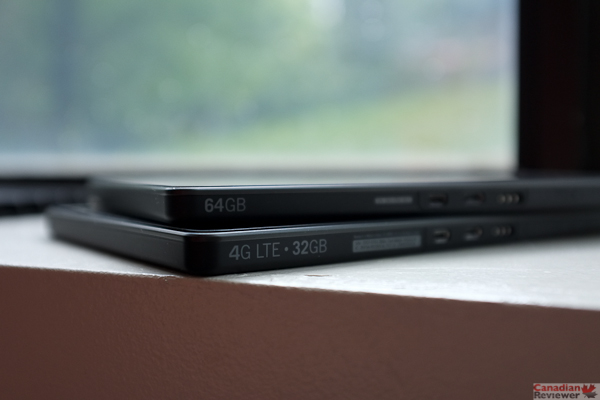
Despite this, the PlayBook is still a strong and versatile device. Now with 4G-LTE, it is even more connected and less dependent on smartphones, which is great.
Things will only get better once BlackBerry 10 and all its features will be made available next year, I am certain RIM prepared the PlayBook 4G-LTE with that in mind so a free software upgrade is all but guaranteed.
The 4G-LTE PlayBook is only available in 32GB configuration, which given the current lack of apps in the QNX ecosystem, is more than enough for various files and media.
It costs around $550 off contract and Bell and Rogers have both announced that it is available on a three-year plan for $350.
Bell offers a $20 a month wireless plan with includes 500 MB of data but they charge more if you exceed that cap. Rogers offers a a $22 a month tablet plan that includes 500 MB of data, as well as a $5 a month 10 MB plan.
If you already own a BlackBerry PlayBook, it may not make much sense to upgrade unless your life depends on 4G-LTE connectivity or you can get your office to pay for it.
New users in the market for a compact and capable tablet now have one more option in the 7-inch tablet category, if they can justify the cost.




















Reader Comments